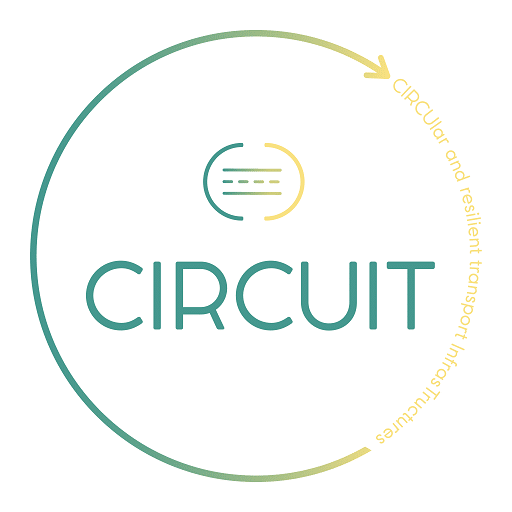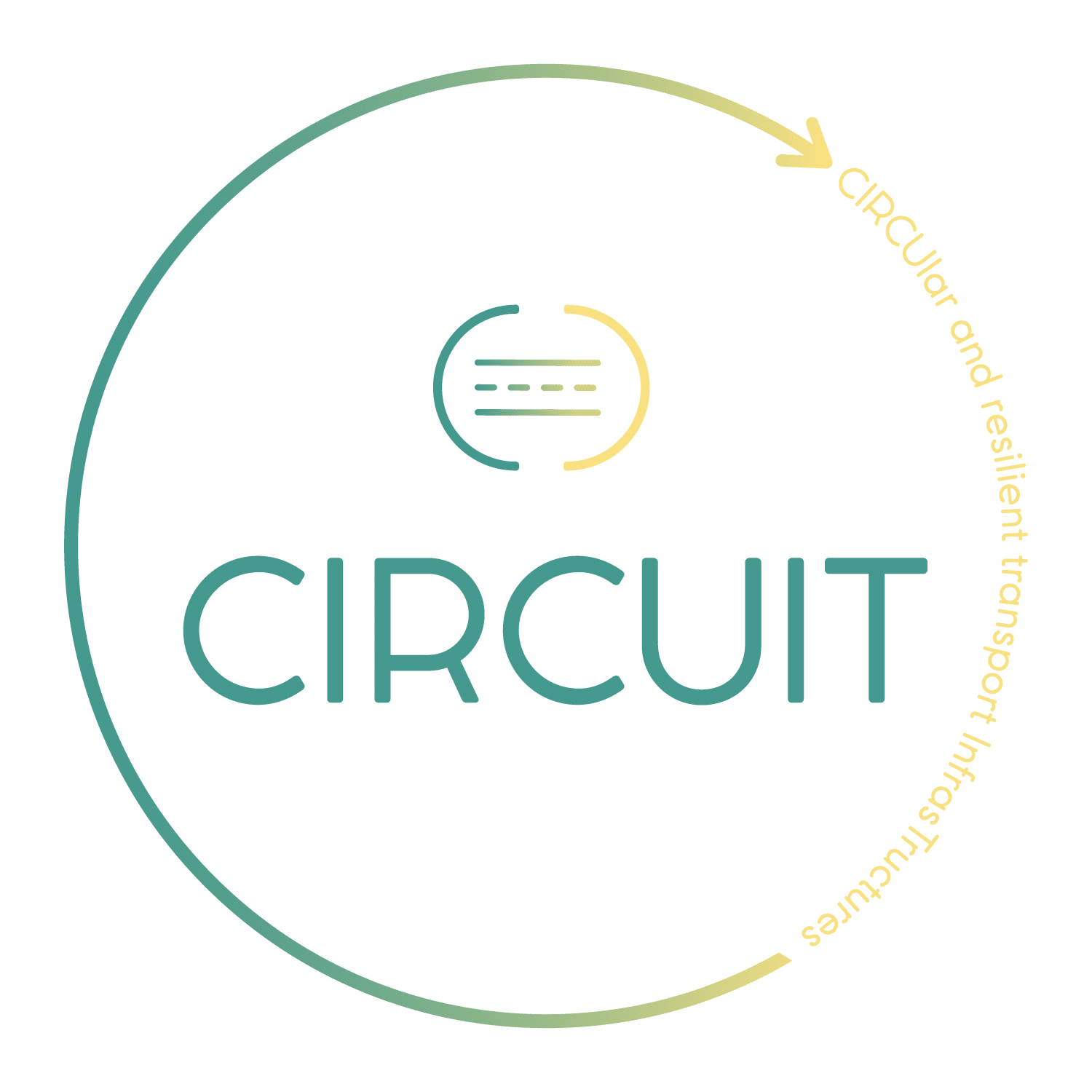The transport infrastructure sector accounts for 60% of global raw material consumption and generates 40% of the world’s CO₂ emissions linked to construction activities [1]. Transitioning to a Circular Economy (CE), where materials are reused, recycled, and repurposed, could reduce emissions by up to 50% and cut material costs by 30% by 2050 [2]. Yet, despite this potential, only 8.6% of the global economy is circular today, with the construction sector lagging further behind [3].
This article synthesizes findings from the CIRCUIT project, which combines industry consultations and literature analysis to identify why circular solutions struggle to gain traction in transport infrastructure and how policymakers and businesses can accelerate progress.
The Urgency of Circularity
Transport infrastructure’s environmental footprint is staggering:
- Concrete production, a cornerstone of roads and bridges, generates 8% of global CO₂ emissions, more than aviation and shipping combined [4].
- Europe alone discards 850 million tonnes of construction and demolition waste annually, yet <30% is recycled for high-value uses [5].
- A shift to circular practices could save the EU €630 billion annually by 2030 through reduced material demand and waste management costs [6].
The CE model prioritizes:
- Material recovery: Recycling asphalt can reduce lifecycle emissions by 50% compared to virgin materials [7].
- Design innovation: Modular bridges, like those piloted in the Netherlands, cut material use by 40%while enabling future adaptability [8].
- Policy alignment: The EU’s Circular Economy Action Plan aims to double material recycling rates by 2030, but sector-specific roadmaps remain fragmented [9].
Despite technical advancements, systemic barriers persist. For example, 75% of engineers cite uncertain regulations as the top blocker to adopting recycled materials [10].
Insights from Industry Consultation
As part of the CIRCUIT project, partners carried out a comprehensive analysis to identify and categorize the barriers preventing CE implementation in transport infrastructure. Informed by the literature review conducted previously, a Stakeholder Consultation was conducted. An industry survey and interviews with decision-makers allowed for a real-world perspective on practical challenges, regulatory constraints, and economic realities. Following the literature review, a questionnaire on motivations, barriers and enablers to circular economy was shared with relevant stakeholders and distributed online to gather wider industry feedback. The questionnaire was specifically sent to representatives of the transport infrastructure industry including public entities, concession companies and developers, design team members (engineers) from main European firms and material and product manufacturers among others. The survey was available for a period of three weeks and resulted in 135 valid responses. Based on the responses received, 3 in-depth interviews were conducted with the key stakeholders identified. The results of the questionnaires and interviews were further analysed against the results of the literature review in the discussion section to determine whether the scientific research is aligned with the industry’s perception and to provide a certain level of objectivity to this process.
Consulting industry stakeholders through surveys and interviews provided valuable insights into how these barriers manifest in practice. Key findings include:
- Sustainability goals alone do not drive action: While ESG (Environmental, Social, and Governance) values are widely shared, they are not strong enough motivators for CE adoption without financial and regulatory support.
- Legal compliance is the primary driver: Companies implement CE practices mainly to meet existing legal requirements, rather than proactively seeking circular solutions.
- Public authorities are seen as key enablers: Given their role as clients for infrastructure projects, public institutions have the power to shape market conditions through financial incentives and regulatory frameworks.
- Economic and regulatory barriers remain the most significant: Industry players emphasize the need for clearer economic incentives and regulatory reforms to encourage circularity.
- Material quality concerns persist: Uncertainty around the performance and reliability of secondary materials continues to be a major hurdle.
- Balancing durability with adaptability is critical: While long-lasting infrastructure is essential, designs must also allow for future modifications to prevent resource inefficiencies.

Figure 4: Summary of the feedback received from the industry regarding the barriers on the implementation of Circular Economy.
Moving Forward: The Role of Policy and Industry in Enabling Circularity
The findings of this study highlight that institutional, economic, and sectoral challenges outweigh purely technical constraints in preventing CE adoption in transport infrastructure. While technical solutions exist, their implementation is dependent on an enabling environment shaped by policy and market conditions.
Public administrations must take a proactive role by:
- Updating regulations to support circular materials and design principles.
- Providing financial incentives such as tax benefits, subsidies, or circularity-based procurement criteria.
- Facilitating collaboration among stakeholders to streamline the transition to circular infrastructure models.
At the same time, industry stakeholders must:
- Embrace innovation by piloting circular solutions and investing in research and development.
- Foster knowledge sharing to spread best practices and encourage adoption across the sector.
- Develop business models that integrate circularity in a way that aligns with financial sustainability.
Through pilot projects and real-world demonstrations, CIRCUIT aims to showcase that a circular model is both technically viable and financially feasible, paving the way for a more sustainable future in transport infrastructure.
References
[1] International Resource Panel (2019). Global Resources Outlook.
[2] Ellen MacArthur Foundation (2021). Completing the Picture: How the Circular Economy Tackles Climate Change.
[3] Circle Economy (2023). Circularity Gap Report.
[4] Chatham House (2018). Making Concrete Change: Innovation in Low-carbon Cement.
[5] Eurostat (2022). Construction and Demolition Waste Statistics.
[6] European Commission (2020). Circular Economy Action Plan.
[7] EAPA (2021). Asphalt in Figures.
[8] Rijkswaterstaat (2020). Circular Bridges: Lessons from the Netherlands.
[9] EU CEEP (2021). Circular Economy Indicators for the Transport Sector.
[10] Institution of Civil Engineers (2022). Global Engineering Survey.
👉🏽 For further insights, CIRCUIT’s Deliverable D1.2 “Upstream and Downstream Supply Chain Actors’ Needs” examines the key challenges and expectations of stakeholders in the transport infrastructure sector. While this document is not yet publicly available, it will be released as soon as possible.

